Build Quality:
qdc is one of the few companies that uses 3D printing technology to manufacture their custom IEMs. This means that qdc scans your physical impressions, details and trims them on a computer and then print the casts out of which the shells are made. This gives them the benefit of having smooth shells without any 3D printing marks.
The build quality of my Fusion is superb. The fit is more on the comfortable side. The nozzles don’t go in too deep to cause any discomfort. They also don’t push too much against my canals, but they still seal nicely.
I can’t see any left-over lacquer or glue-residue on my set anywhere. The face plate closing is done with precision. No sharp corners, no bubbles and no smears. Just right out perfect. What impresses is how incredibly organized all internals look. Most manufacturers just dump the cables in there, but qdc really keeps things neat and clean. I like that.
Each side is marked with a coloured dot to indicate left and right. Red is right, blue is left. Very easy. On both pieces there is also a small hole in the shell for pressure relief. Since the dynamic drivers build up a considerable amount of pressure when working, it has to be vented. qdc uses a short horn-bore design, where the sound-tubes end shortly before the nozzle is finished.
As mentioned, the 2pin sockets of qdc’s monitors are always protruded. This means they stand out from the shell. Most manufacturers go for a flush or recessed design. Personally, I prefer flushed sockets as well, but I can understand why one would use protruded sockets. They give just a little more space in the shells and with the right cable design, you also get enough support on the pins.
Cleaning the bores with the supplied tool could be better. As the tool doesn’t come with a hook to scrap out debris and ear-wax. I usually use a FiR vacuum cleaner to do that, so I’m good, but customers should be aware. Also, I recommend to clean the monitors on a daily basis, just to keep them at their optimum state.
All in all, the CIEMs are exemplary finished. Perfect fit and build quality.
Sound:
I have been mighty impressed with qdc’s Anole VX. So I was very eager to check out their latest monitor as well. Typically when thinking of hybrids we expect neutral or more often v-shaped signatures. The Fusion goes for a completely different tuning.
If you are looking for thunderous bass, massive slam or even a warm and thick sound, you can stop right here. The Fusion is all but that. Fusion is a mid-centric to bright IEM that focusses on details and precision. It often reminds me of the Empire Ears Zeus XIV, just to give you an overall idea of Fusion’s sound.
Bass definitely places quality over quantity. It’s placed just slightly south of neutral, to give mids and highs more space. This means also that you won’t get the hardest hitting or biggest sounding lows. No, this is not what Fusion is about. Its low-end does come with good weight and thickness, but the body is not particularly huge.
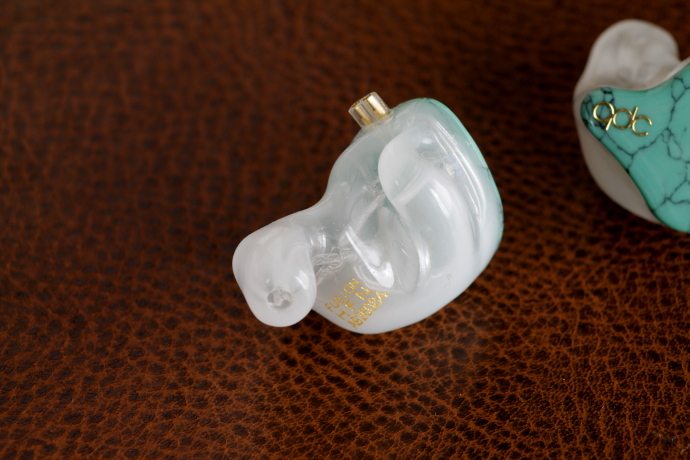
qdc Fusion
Fusion gives bass a less prominent placement in the signature. It doesn’t feature the biggest rumble or widest extension into bass. It has good precision and speed. Lows have nice texture and layering, but there of course is room for improvement. Still, Fusion has a natural sounding bass-response with decent sub-bass foundation. It just doesn’t put it very forward. It’s a linear sounding bass, that doesn’t give sub-, mid- or upper-bass special treatment. Bass is tight, fast and snappy.
Of course you can always use an Equalizer to pump up that low-end, especially since Fusion reacts very well to that. I however would never recommend giving drivers more work than they were intended to cover. In my opinion it’s always better to cut down frequencies than to push them.
The transition from lows to lower mids is seamless. Lower midrange isn’t overly weighty, thick or forward either. Fusion does give the most attention to the rest of the midrange, all the way to the upper mids. You get a slightly lighter presentation. Body is good size wise, but don’t expect anything full or heavy.
Mids are precise and clean. You don’t get any of the bass smear that’s often found in V-shaped hybrids. Instruments are presented with accuracy and a natural approach. For some they might be missing meat on the bones though. Upper midrange is a bit more forward, and Fusion places brighter instruments and female vocals a bit more accentuated and more in focus. This doesn’t mean male singers don’t sound correct though. They transport a good dose of emotions and harmonics. In terms of richness the Fusion again is a more neutrally coordinated monitor. It isn’t particularly wet or dry sounding, but stays in a grain-free zone while also not overly colouring notes. To me the entire midrange sounds spot-on, with an uncoloured tonality.
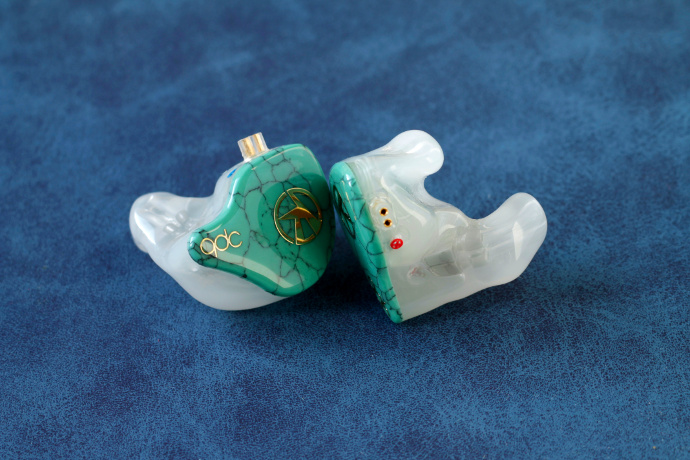
qdc Fusion
What the Fusion does very well is stage-construction. It creates a wide and deep sound stage and organizes it with care. Fusion does create a venue that stretches a bit outside your head. The stage is slightly holographic. Musicians and instruments are separated very well and positioned with precision in the room. Imaging is rather easy with the Fusion, as it images sharply. Resolution is top notch and Fusion renders at a high rate. Left/right separation is also done well. The Fusion knows how to bring out and present micro-details. It puts every information it gets out there, for your ears to process.
I mentioned before, that Fusion is a mid-centric to brighter IEM. This however, doesn’t automatically mean it has a sharp, hot or piercing treble. The contrary is true. Yes, there is extra attention on the brighter instruments and sounds. But treble is done with taste. Cymbal crashes, violins and other higher pitched tones don’t come across as hard-edged or tinny. They sound clean and well defined. Sibilance is something the Fusion is free of to my ears. It doesn’t produce any sharp sounds that put me off in disgust.
Fusion is a more critical monitor, that shows you the quality of the files. It doesn’t beautify bad recordings, so beware if your files are not mastered well.
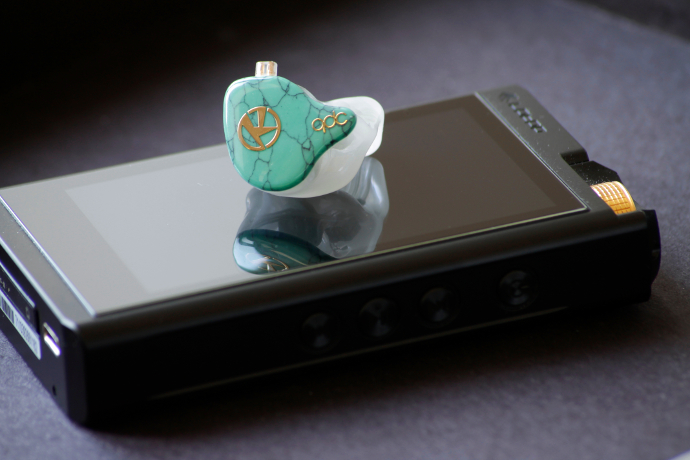
qdc Fusion
Sources:
The Fusion doesn’t really need extra amplification or excessive power to shine. However, I find most hybrids do scale up with the right source. Some DAPs aren’t adequate to bring out the best performance of the multiple driver technologies in my opinion. The mid-centric and lighter sound of Fusion makes it a great partner for fuller and smoother sources. Fusion’s moderate sensitivity guarantees that it doesn’t pick up any audible hiss from my sources.
Lotoo – PAW Gold Touch
With the Lotoo you get a more technical sound, something more digital if you will. Bass is light and fast. You get a well structure stage, great left/right separation and resolution to die for. There still are good emotions, good body and weight, but everything seems more on the lighter side.
Without any equalizing the Fusion can sound very detailed and a bit dry. It’s missing some blood to become organic sounding. You get superb transparency, great imaging and very good instrumental separation. The Fusion’s background is very dark with the Touch, and this makes musicians get into spotlight with ease. Every note seems to have a distinct place when reproduced.
You get a neutral midrange, where vocals have wonderful emotions. Male singers sound a bit light, while females are just gorgeously realistic. It’s a fast and light sound, that puts precision above enjoyment. Treble is bright and clear, with high shimmer and glow.
The reference sounding PAW Gold Touch might not be the best source for the Fusion. There are other pairings that do the qdc more justice and result in a nicer sound overall.
More on the next page!





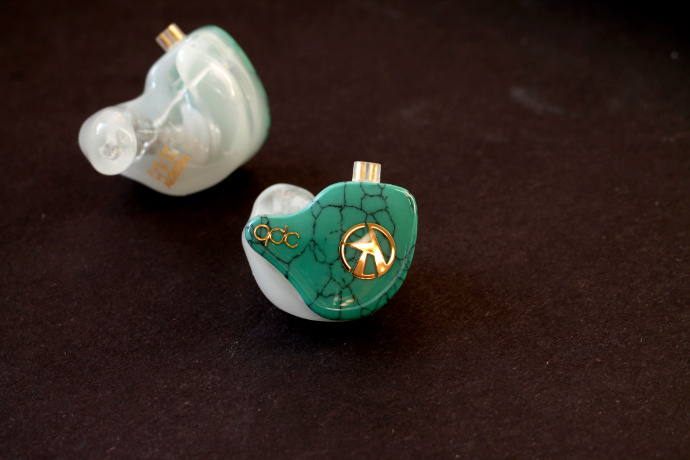

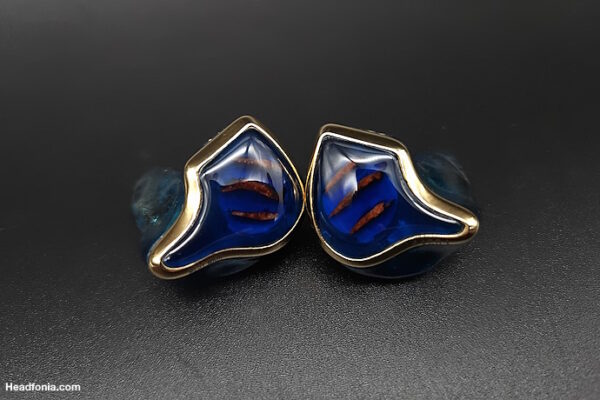
Adrián
Yo ya pedi los fusion, estoy con los ojos cerrados. Tengo los fiio fh7, se que están en un nivel más bajo, sin embargo me gusta su tonalidad y firma y como suenan con mi oppo h2a y mi q5 amd con 4,4 balance, sacando el audio de mi ibasso dx80. Espero tener mayor calidad con este IEM fusion y que juegue bien con mis dac y amps.
NIHAL
Hey how does it compare to Camfire Audio Andromeda? Any better?